Promoting international research mobility and creating international talent circulation are essential conditions for robust research and development. To this end, it is important to internationalize the research ecosystem, promote international human resource exchange, and ensure that Japan is firmly integrated into the international brain circulation network. Under this special topic, we will introduce the current status and challenges of Japan's research efforts to promote international brain circulation to produce outstanding research results as well as the attractiveness of Japan's research environment, which is the key to attracting foreign researchers, through a series of interviews with relevant people in the field. In this interview, we spoke to Dr. Kaoru Takara, President of National Research Institute for Earth Science and Disaster Resilience (NIED).
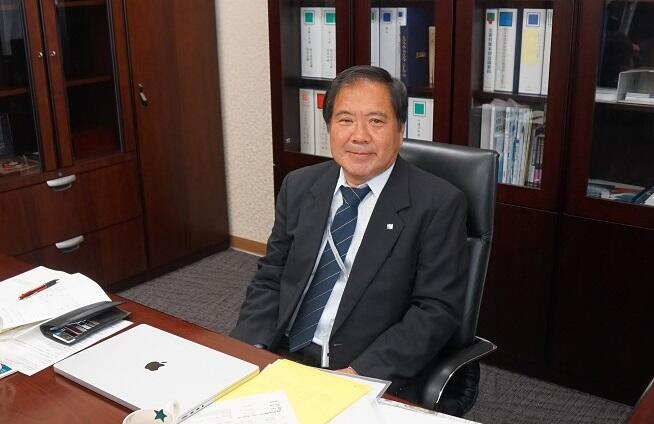
Contributing to strengthening Japan's disaster preparedness and response capabilities through co-creation as a national research and development agency
── Dr. Takara became President of NIED this April, which marks the 60th anniversary of its establishment.
I have a long experience of university work. After working as an instructor at the Faculty of Engineering, Kyoto University, and then as an Associate Professor at Gifu University, I joined the Disaster Prevention Research Institute at Kyoto University in 1994. Since then, I have been engaged in disaster risk reduction (DRR) for nearly 30 years. I have contributed to many international projects, and I have sent researchers abroad for long periods of time as part of international brain circulation. Since I have held positions as a researcher at a university-affiliated research institute and as a university faculty member, I was able to follow my own academic interests in my work.
NIED, a national research and development agency, is the only national institute that is a center of excellence in DRR−related research. I always aspired to become a public servant and dedicate myself to working for the nation, so I believe I have been given a challenging and rewarding position.
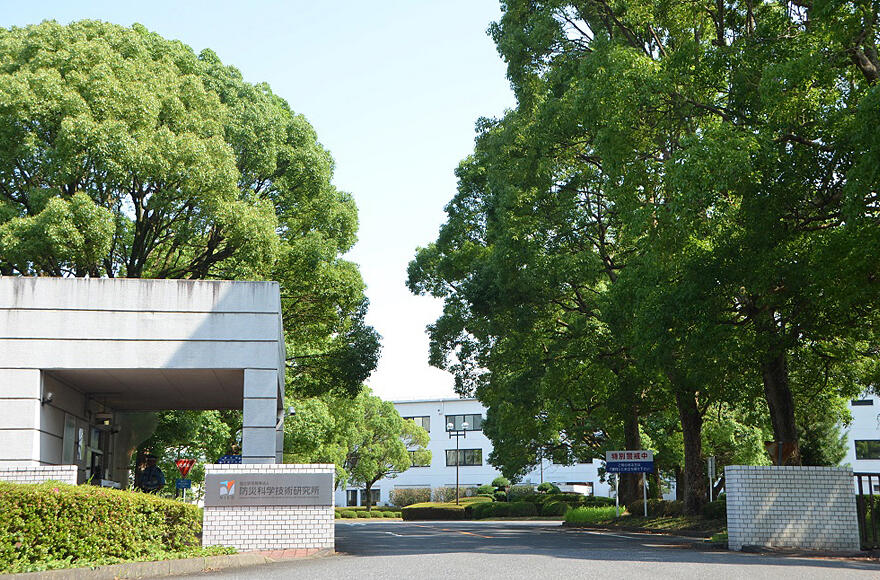
Provided by Public Relations and Strategic Branding Division of NIED
── The 5th Mid-to-Long Term Plan began this year. How do you view the ongoing activities of NIED, and in what directions are you going to take it as the new President?
As a government institute, NIED's objective in addressing DRR is to promote research into all types of natural hazards in all phases of disaster prediction, prevention, response, and recovery. An all-hazards approach involves coping with the full range of disasters. "All phases" means taking into account all the various stages of DRR, ranging from prediction and prevention to emergency response, recovery and restoration. To this end, we should mobilize not only science and engineering but also the humanities, social sciences, and other fields.
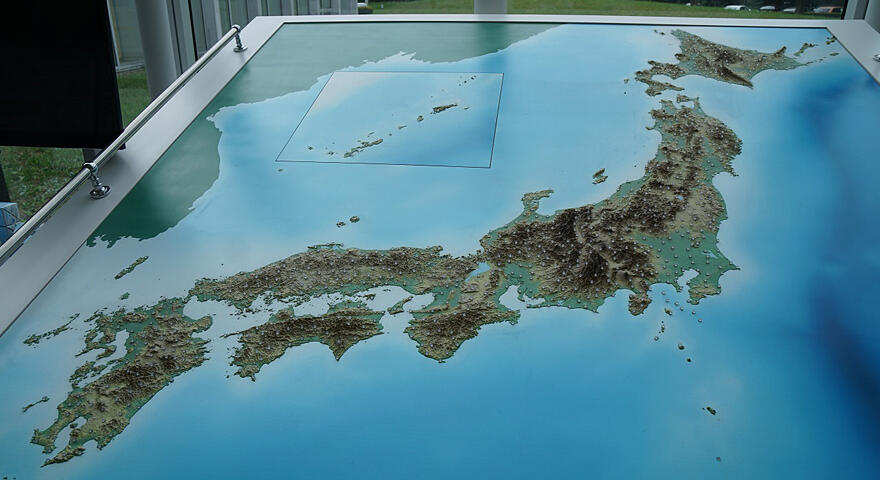
About 2,100 observation stations are embedded in the land and sea across the Japanese Archipelago. The data captured by NIED's observation network can be used for earthquake early warnings. In addition to the Seafloor observation network for earthquakes and tsunamis along the Japan Trench (S-net), Nankai Trough Seafloor Observation Network for Earthquakes and Tsunamis (N-net) will be deployed in two years. In N-net, 36 observation sensors will be installed on the seafloor from off Kochi to off Miyazaki to cover the Nankai Trough. With such a seafloor observation network in place, earthquakes will be detectable 20 seconds quicker and tsunamis will be predictable 20 minutes earlier compared to land-based observations alone. These fundamental observation systems have been constructed since the Great Hanshin-Awaji Earthquake, and although they are still in the process of development, they are already being used for earthquake early warning systems. Monitoring of Waves on Land and Seafloor (MOWLAS) integrates the operation of these multiple observation networks to cover all land and sea areas in Japan. We will continue to actively engage in these important fundamental activities.
NIED has several large world-class experimental facilities. For example, the Three-Dimensional Full-scale Earthquake Testing Facility called "E-Defense" in Hyogo Prefecture is the world's largest facility capable of testing the seismic destruction of large structures by shaking them from three dimensional directions. Large-scale Rainfall Simulator here at the Tsukuba headquarters can conduct various experiments with rainfall simulations close to the actual rainfall. In addition to this, Cryospheric Environment Simulator in Nagaoka and Shinjo is equipped with wind tunnels and equipment to produce snowfalls similar to the real thing and conducts basic research on snow and ice, as well as cutting-edge research generating scenarios of snow and ice related disasters to assist with preparedness and response.
The mobilization of such experimental facilities enables world-class fundamental research based on empirical experiments. Using this data, it is possible to create what is now often referred to as a "digital twin," that is, a virtual world that resembles the real world, and conduct a variety of simulations. Research results are produced by conducting observational experiments, developing modeling, conducting simulations, performing predictive calculations and undertaking scenario analyses.
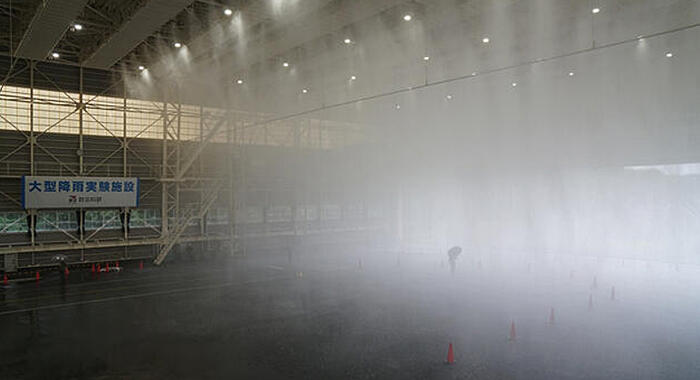
The results of these studies will be published as research papers and practical information products will be made available as appropriate. We will promote further adaptation of the research into real-world capabilities by encouraging users to take actions based on the information generated.
Through this process, we build up cooperative relationships between different stakeholders. We have already been partnering with many universities, and we will collaborate and co-create more than ever with a range of institutions and organizations, not only those related to DRR but also others, such as the National Institute for Environmental Studies, Public Works Research Institute, Building Research Institute, National Institute for Agro-Environmental Sciences and the Forestry and Forest Products Research Institute in Tsukuba. This will not involve "competition" but "co-creation", even though the two terms are pronounced the same in Japanese (Kyousou). We would like to reinforce the upward momentum of co-creation.
── In your inaugural address as President, you stressed "A resilient society built by everyone."
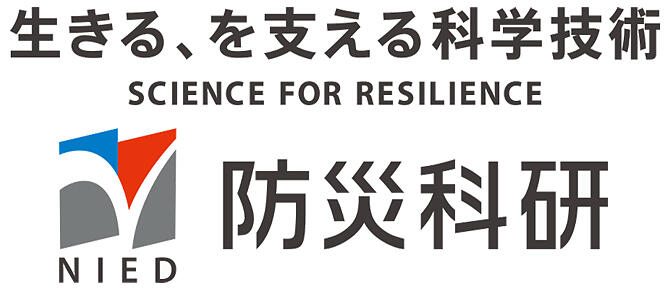
Provided by NIED Public Relations and Strategic Branding Division
Exactly. "Science for Resilience" is written above the logo of NIED. The term "co-creation" becomes relevant when considering how to realize the concept of "Science for Resilience." This concept can be changed into the words "built by everyone." The term "everyone" should be interpreted in two ways, the first referring to all NIED staff, and the second referring to the various stakeholders outside the institute. We would like to accomplish co-creation in such a way as to benefit society through practical information products and contribute to facilitating the enhancement of the DRR capacities of both government and society.
── In such a development, will Digital Transformation (DX) still be important?
Indeed. Since the late 1990s, a movement toward "small government" has been emerging. The government can hardly undertake large projects, such as public infrastructure work, however it can provide necessary administrative information to the public through the Incorporated Administrative Agencies Information Disclosure Act. The government expects the public to come forward for information, protect themselves, and take actions at their own risk as much as possible.
It is unreasonable to ask you to "help yourself" in Japan's "super-super-aging society," however. The phrase "self-help, mutual help, mutual assistance and public assistance" is often said in recent times. This is not just about self-help, but mutual help, in which people help each other, is also becoming more important. Mutual assistance sometimes includes public assistance services provided at the local government level, but relies a little more on social norms, such as helping one another through insurance. At a more personal level, it is mutual help.
As things stand in the world today, you cannot expect too much public assistance from central or local governments. You have to protect yourself. To do so, it is crucial to successfully obtain information that is made available to the public by administrative agencies. If information that is available is not accurate, people will not be able to take the appropriate actions. It is therefore extremely important to provide accurate information about DRR in a timely and appropriate manner. We need to share with the public the relevant information about DRR, widely and impartially distributed through the Disaster Prevention DX and the Disaster Prevention Digital Twin, as is now being called for. We must not allow a society to be created in which only those who are skillful in information processing can benefit. Disaster risk information must be widely disseminated to include the elderly, people with disabilities and even children, so that they know what actions to take. We should provide practical information in an appropriate manner that enables people to understand what they need to do, not simply how many meters the water level of the river is at, how much rainfall there is or how intense the earthquake was.
The information society under the small government that is being advocated is basically a world in which individuals can obtain solid information to protect themselves and their lives, and we believe that concepts such as DRR DX and the DRR Digital Twin are mechanisms through which such a world will function well.
DRR is also relevant to national security
── In what way is DRR relevant to national safety and security?
For example, if there is a dam located upstream of a river that flows across the border, the safety of that dam may become a serious issue in the event of an accident or disaster. The recent destruction of a dam in Ukraine caused flooding. No one knows who destroyed it, but ultimately, the subject of DRR is closely related to national security. NIED's earthquake and tsunami observation network is definitely applicable to matters of national defense and to the protection of the fisheries industry.
The government is trying to strengthen national security, and we must not stick just to the activities devoted to our individual missions; we need to consider utilizing the existing systems for upgrading national security. I believe that, as a national research and development agency, we should be proactive in coping with the kinds of things that universities are somewhat hesitant to do.
Concerning the creation of startups as a form of social implementation of research results
── From the perspective of social implementation of research results in the field of DRR, how do you see your activities with regard to founding startups?
I think that all companies are addressing DRR for their own personnel and assets. A company may consider the safety of the entire neighboring community in the context of trying to develop its own DRR, embracing its contribution to the community, social responsibility and corporate social responsibility.
When safety is at stake, for example, electric and gas companies and railroad operators have seismographs, and we also have many of these. I think it would be a good idea to integrate this existing infrastructure so that companies themselves can benefit from the new seismic observation network. We have been operating the Data use and application council for Resilience for the past five years, and 71 companies and associations have joined the Council to benefit from the shared data.
International exchange and internationalization of the research ecosystem
── I would like to ask about strategic priorities and the importance placed on internationalization and the international circulation of talent, and how NIED is working on it.
When we looked at where NIED has dispatched its staff overseas, we found that since 2002, 17 staff members have been dispatched under the med-to-long-term overseas fellowship program. They were sent to universities and research institutes in the U.S., U.K., Canada, Germany, New Zealand, Italy, Finland, etc., which are pretty nice places to study. A person who went to Finland said he decided to go to that country because he wanted to immerse himself in a different environment. Some of those who were dispatched and have returned to Japan are active at Kyoto University, Osaka Prefecture University, Kobe University and the University of Tsukuba. There is a cycle of going abroad from NIED and then coming back to work somewhere else in Japan. At NIED, too, all those with overseas experience have become mainstays within the institute, which is encouraging. I am concerned, however, that the mid-to-long-term overseas fellowship program has stopped in recent years, and I would like to revive it.
We have an agreement to accept interns from NIED with Esri, a U.S. company that produces ArcGIS, geographic information system (GIS) software that can superimpose layers of spatial information. On each of the last three occasions, we have sent promising staff members for training for about 2−3 months each. Esri is the world's leading GIS company. Our staff had a great experience on the company team and using its system. I attended the Esri user conference in San Diego this July and asked the President of the Esri to continue to welcome interns from NIED.
NIED now has about 170 researcher positions, including part-time posts. Six of our researchers are from abroad, including China, Colombia, Venezuela, Nepal and Korea. Thanks to the increasing number of countries interested in DRR, we also have foreign researchers from Turkey, Korea, Italy, Peru, India and the U.S. who have come to NIED to study for a period of several months or so. Young foreign researchers often come here or to other research institutes in Japan for joint research in the field of DRR under the Science and Technology Research Partnership for Sustainable Development (SATREPS), which the Japan Science and Technology Agency (JST) conducts in collaboration with the Japan International Cooperation Agency. Under SATREPS, we have received a post-doctoral fellow from Croatia.
Before SATREPS began in 2008, I was asked if there would be any applications in response to the solicitation of projects in the DRR field, and I answered that there would definitely be some. Thirty-three projects in the field of DRR have already been implemented. I have served as a principal investigator for SATREPS all the way up until this March. I have continued to serve as a member of the promotion and evaluation committee.
The best magnet to attract overseas researchers is the opportunity to use research facilities and equipment that only NIED possesses. E-Defense, which is a leading facility in the world, Large-scale Rainfall Simulator, Cryospheric Environment Simulator and the earthquake and tsunami observation network data, which cover the whole of Japan, can all be accessed here. I hope that because these research infrastructures are open internationally, this system can be a centripetal force, attracting international talent. No matter how many ideas one has, the actual operation of such experimental facilities cannot be performed without money. For example, an experiment using E-Defense to operate a shaking table on which life-size structures are built, requires a budget in the order of tens of millions of yen.
NIED researchers in cryospheric sciences are conducting advanced research with researchers in Switzerland, Norway and other countries. NIED data from the Snow and Ice Research Center in Nagaoka and Shinjo Cryospheric Environment Laboratory are registered with the World Meteorological Organization as a historical record of snow observations. These are the only two stations from which data from Japan are registered. We also have agreements with Esri, from the U.S., for GIS and with the National Science and Technology Center for Disaster Reduction (NCDR) in Taiwan.
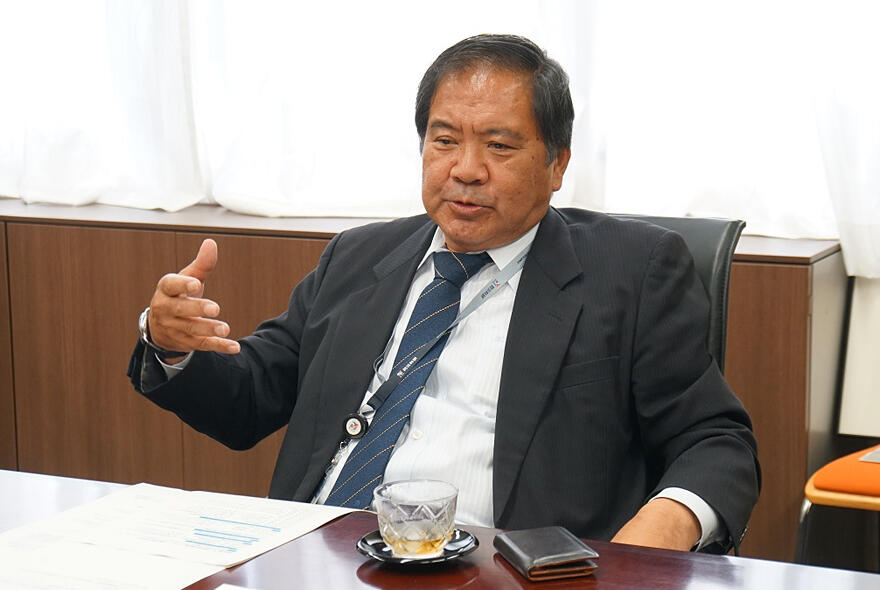
Japan needs a system to welcome and make use of excellent foreign talent
── As Japanese society loses its vitality due to the declining birthrate and aging population, making use of foreign talent in an appropriate manner is necessary, along with other actions, to maintain and strengthen the country's competitiveness and vitality. This is a challenge not only in the research field but also for Japanese society as a whole. What do you think will be indispensable for Japanese society as it copes with the challenges of internationalization?
There are quite a few foreigners who come to Japan and return to their home countries after enjoying their time here. Some want to settle down and live in Japan if possible. In fact, one female student who came to Kyoto University and became a post-doctoral researcher loved Japan so much that she wanted to settle down and continue her research in Japan, but she was unable to do so.
If foreign minds have excellent abilities and love Japan so much that they want to become Japanese citizens, or if they are capable enough and can live well in Japanese society, the country should make it easier for them to settle down in order to increase society's overall resilience. This requires a system that can offer such foreign talent an opportunity to successfully integrate into Japanese society. Nevertheless, there are deep-seated problems, such as the closed-off nature of Japanese society and the lack of available positions in academia and business. An increasing number of companies are opening their doors to foreigners, but there are still quite a few that are unwilling to do so. It is good that foreign people work for us for a time, but there is a view that it would not be possible for them to become executives or even a company president, even if they wanted to.
When I see students and researchers coming to Japan from abroad, I think Japanese people need to study more. Even in the laboratory, Japanese students leave early and quickly, whereas Chinese and Southeast Asian students study until late. Those who come with master's degrees work hard to earn their doctorate. I wonder why Japanese students do not work harder.
── How can Japanese researchers be included in the international circulation of talent?
Even if you create an international brain circulation program, there are not many Japanese students who want to go abroad for a short period during their master's degree, let alone for a year or two after obtaining their doctorate. I think it would be better to send students overseas under a well-organized program connected to their employment when they return. It would be desirable to build a system in which students or young researchers are already assured of a post in Japan if they go abroad and come back with good results after two years or so.
Universities tend to like to keep their own talent pool in their labs rather than sending them elsewhere. A research project is usually organized in a performance-based manner, lasting three or five years, so it is useful to have an associate professor who can pursue the project and do it well. This may be because associate and assistant professors are familiar with managing projects.
Take the example of one student I hired as my own assistant. I sent him to an overseas field site in Indonesia as an undergraduate, and then to Canada for eight months for his master's degree, after which he then earned his doctorate. I employed him as an assistant in the middle of his doctorate and then sent him again immediately to an American university for two years. After he returned to Japan, I let him go to a research institute in Japan for five years and then brought him back to my own laboratory, finally appointing him an associate professor. He was promoted to the professor this March. I believe that the circulation of talent we have created is good. I am sure there are other examples of this kind of talent circulation, and it might be a good idea to collect and share the best practices. I suppose that information about such cases may not be shared, surprisingly. I think it is vital to regularly follow up on the activities of researchers sent by talent circulation programs after their return, rather than just submitting a report upon the completion of an assignment.
I am a little bit anxious that if a lot of research funds are allocated to universities through university funding in the future, young minds will all go to the universities rather than national research and development agencies. NIED has good relationships with various universities, so if there is a need for permanent positions for researchers or research opportunities for post-doctoral fellows, we can take them, train them here and have them go somewhere else or return to where they came from. The best and brightest researchers at NIED could become professors somewhere.
We should make sure that the circulation of talent domestically meshes well with opportunities for overseas experience. I believe that successful integration of domestic and international talent circulation is important.
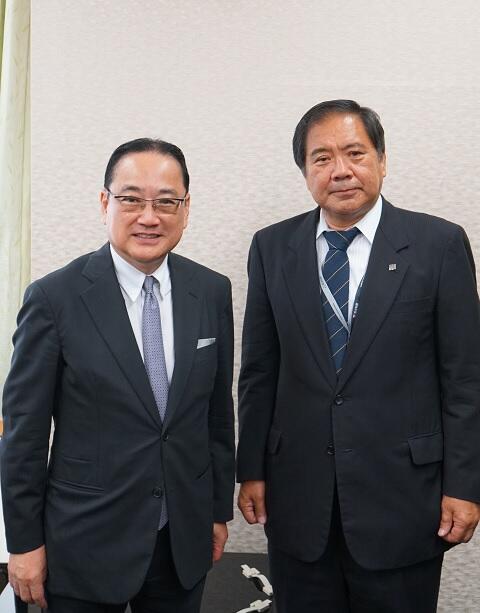
(Interview conducted on July 19, 2023 at NIED, Tsukuba, Ibaraki)
Interviewer: Yoshihiro Higuchi
Director for Global Strategic Issues, Japan Science and Technology Agency (JST)
(Editor of the original article in Japanese
Ki Sou, Editor-in-chief of Keguan Japan)
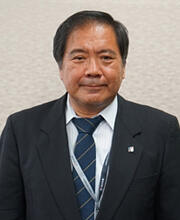
Profile
Kaoru Takara
President, NIED, a national research and development agency
Graduate of the Faculty of Engineering, Kyoto University, March 1979
Master of Science, Graduate School of Civil Engineering, Kyoto University, March 1981
Doctor of Engineering, Graduate School, Kyoto University, January 1990
Associate Professor, Faculty of Engineering, Gifu University, 1990
Associate Professor, Disaster Prevention Research Institute, Kyoto University, 1994
Professor, Disaster Prevention Research Institute, Kyoto University, 1998
Has conducted research for many years on heavy rainfall and flood disasters and landslides.
Served as a SATREPS principal investigator from April 2014 to March 2023 to promote international collaborative research.
In his current post since April 2023
President of the Japan High School Baseball Federation
<About NIED>
NIED is a national research and development agency. A range of research is conducted under the principal objective of realizing resilient society to natural disasters by enhancing science and technology for disaster risk reduction. NIED aims for science and technology capable of predicting and preventing disasters, mitigating damage, and achieving recovery and reconstruction after disasters.
NIED homepage: https://www.bosai.go.jp/e/
Produced by the Science Japan Editorial Team




